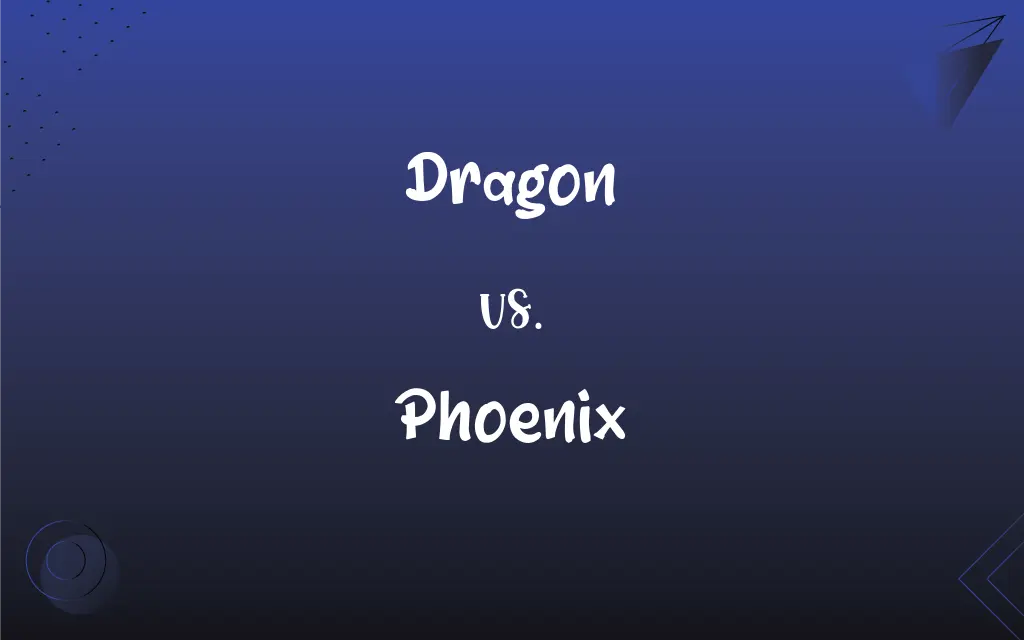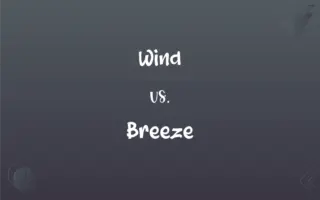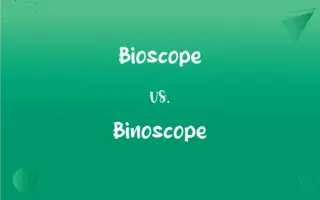Dragon vs. Phoenix: What's the Difference?
Edited by Harlon Moss || By Janet White || Updated on October 11, 2023
A dragon is a mythical creature, often depicted as a large, serpentine legendary creature; a phoenix is a mythical bird that cyclically regenerates or is reborn from its ashes.

Key Differences
In a broad overview, a dragon typically conveys strength, ferocity, and power in numerous mythologies and folklore. Comparatively, the phoenix predominantly symbolizes rebirth, renewal, and eternal life, particularly in Greek mythology. While dragons are often portrayed as protectors or threats, phoenixes generally stand as symbols of hope and resurgence, offering a contrasting thematic resonance in myths and stories.
In physical representation, dragons and phoenixes have distinct differences that are widely recognized in mythical illustrations. Dragons, pervasive across numerous cultures, are often depicted as large, fire-breathing reptiles, usually with wings, scales, and sharp claws. On the flip side, a phoenix is customarily represented as a majestic, vibrantly colored bird engulfed in flames or arising from ashes, symbolizing its cyclical rebirth.
Culturally, the dragon and phoenix are embedded in the mythologies of various civilizations and convey disparate meanings. In Chinese culture, the dragon is a symbol of power, authority, and good fortune, while the phoenix represents harmony, balance, and virtue. Together, they symbolize a harmonious marriage in Chinese culture, often used in matrimonial decorations.
In different cultural contexts, dragons and phoenixes hold varied but equally impactful meanings. Dragons can be heroes or villains, symbols of obstacles to be overcome, or guardians protecting precious treasures. In contrast, the phoenix consistently maintains a symbol of hope and rebirth, offering a consistent narrative of life, death, and resurrection across various cultures.
Lastly, in popular culture, the dragon and phoenix persist as fascinating mythical creatures, explored in various media formats, from films to books. Dragons often play roles that emphasize their might and formidable presence, while phoenixes typically weave into narratives that explore themes of revival, cyclicality, and perseverance against despair.
ADVERTISEMENT
Comparison Chart
Symbolism
Often symbolizes strength, power, and ferocity.
Symbolizes rebirth, renewal, and eternal life.
Physical Traits
Typically depicted as a large, winged, fire-breathing reptile.
Often portrayed as a vibrant bird associated with fire or ashes.
Cultural Usage
Can be a symbol of power, threat, or protectorate depending on the cultural context.
Universally seen as a symbol of rebirth and cyclicality across different cultures.
Common Role in Myths
Frequently seen as protectors, hoarders of treasure, or obstacles to be overcome.
Generally represents hope, continuity, and recovery from catastrophe.
Associated Elements
Commonly associated with fire, destruction, and power.
Associated with fire but in the context of rebirth and regeneration.
ADVERTISEMENT
Dragon and Phoenix Definitions
Dragon
A mythical creature often depicted as a large, fire-breathing reptile with wings and claws.
The knight bravely faced the dragon to save the captive princess.
Phoenix
Symbolically, a representation of cyclic existence, continual renewal, or resurrection.
After the city was destroyed, it was rebuilt with a spirit reminiscent of the phoenix, emerging from its ashes.
Dragon
See Draco2.
Phoenix
In some cultures, a symbol of grace, virtue, and the balance between the yin and yang.
The artwork depicted a phoenix, gracefully balancing the energies of both yin and yang.
Dragon
A mythical monster traditionally represented as a gigantic reptile having a long tail, sharp claws, scaly skin, and often wings.
Phoenix
A mythical bird believed to regenerate or be reborn from its own ashes after death.
The phoenix is often seen as a symbol of rebirth and eternal life.
Dragon
Any of various lizards, such as the Komodo dragon or the flying lizard.
Phoenix
In Greek mythology, a solitary bird with vibrant feathers and a melodious song.
The beautiful song of the phoenix was said to bring joy and hope to all who heard it.
Dragon
A fiercely vigilant or intractable person.
Phoenix
(Mythology)A bird in Egyptian mythology that lived in the desert for 500 years and then consumed itself by fire, later to rise renewed from its ashes.
Dragon
Something very formidable or dangerous.
Phoenix
A person or thing of unsurpassed excellence or beauty; a paragon.
Dragon
(Archaic) A large snake or serpent.
Phoenix
Phoenix A constellation in the Southern Hemisphere near Tucana and Sculptor.
Dragon
A legendary serpentine or reptilian creature.
Phoenix
(mythology) A mythological bird, said to be the only one of its kind, which lives for 500 years and then dies by burning to ashes on a pyre of its own making, ignited by the sun. It then arises anew from the ashes.
Dragon
In Western mythology, a gigantic beast, typically reptilian with leathery bat-like wings, lion-like claws, scaly skin and a serpent-like body, often a monster with fiery breath.
Phoenix
(figuratively) Anything that is reborn after apparently being destroyed.
Astronomers believe planets might form in this dead star's disk, like the mythical Phoenix rising up out of the ashes.
Dragon
In Eastern mythology, a large, snake-like monster with the eyes of a hare, the horns of a stag and the claws of a tiger, usually beneficent.
Phoenix
(Chinese mythology) A mythological Chinese chimerical bird whose physical body symbolizes the six celestial bodies; a fenghuang.
Dragon
An animal of various species that resemble a dragon in appearance:
Phoenix
(historical) A Greek silver coin used briefly from 1828 to 1832, divided into 100 lepta.
Dragon
(obsolete) A very large snake; a python.
Phoenix
(obsolete) A marvelous person or thing.
Dragon
Any of various agamid lizards of the genera Draco, Physignathus or Pogona.
Phoenix
(Australia) To transfer assets from one company to another to dodge liability
Dragon
A Komodo dragon.
Phoenix
Same as Phenix.
Dragon
The constellation Draco.
Phoenix
A genus of palms including the date tree.
Dragon
(pejorative) A fierce and unpleasant woman; a harridan.
She’s a bit of a dragon.
Phoenix
The state capital and largest city of Arizona; situated in a former desert that has become a prosperous agricultural center thanks to irrigation
Dragon
The (historical) Chinese empire or the People's Republic of China.
Napoleon already warned of the awakening of the Dragon.
Phoenix
A large monocotyledonous genus of pinnate-leaved palms found in Asia and Africa
Dragon
(figuratively) Something very formidable or dangerous.
Phoenix
A legendary Arabian bird said to periodically burn itself to death and emerge from the ashes as a new phoenix; according to most versions only one phoenix lived at a time and it renewed itself every 500 years
Dragon
A type of playing-tile (red dragon, green dragon, white dragon) in the game of mahjong.
Phoenix
A constellation in the southern hemisphere near Tucana and Sculptor
Dragon
A luminous exhalation from marshy ground, seeming to move through the air like a winged serpent.
Phoenix
A term metaphorically utilized to describe overcoming adversity or rising after a downfall.
After the failure of his first company, he rose like a phoenix, establishing a now-thriving business empire.
Dragon
A short musket hooked to a swivel attached to a soldier's belt; so called from a representation of a dragon's head at the muzzle.
Dragon
A background process similar to a daemon.
Dragon
A variety of carrier pigeon.
Dragon
(slang) A transvestite man, or more broadly a male-to-female transgender person.
Dragon
A fabulous animal, generally represented as a monstrous winged serpent or lizard, with a crested head and enormous claws, and regarded as very powerful and ferocious.
The dragons which appear in early paintings and sculptures are invariably representations of a winged crocodile.
Thou breakest the heads of the dragons in the waters.
Thou shalt tread upon the lion and adder; the young lion and the dragon shalt thou trample under feet.
He laid hold on the dragon, that old serpent, which is the Devil and Satan, and bound him a thousand years.
Dragon
A fierce, violent person, esp. a woman.
Dragon
A constellation of the northern hemisphere figured as a dragon; Draco.
Dragon
A luminous exhalation from marshy grounds, seeming to move through the air as a winged serpent.
Dragon
A short musket hooked to a swivel attached to a soldier's belt; - so called from a representation of a dragon's head at the muzzle.
Dragon
A small arboreal lizard of the genus Draco, of several species, found in the East Indies and Southern Asia. Five or six of the hind ribs, on each side, are prolonged and covered with weblike skin, forming a sort of wing. These prolongations aid them in making long leaps from tree to tree. Called also flying lizard.
Dragon
A variety of carrier pigeon.
Dragon
A fabulous winged creature, sometimes borne as a charge in a coat of arms.
Dragon
A creature of Teutonic mythology; usually represented as breathing fire and having a reptilian body and sometimes wings
Dragon
A fiercely vigilant and unpleasant woman
Dragon
A faint constellation twisting around the north celestial pole and lying between Ursa Major and Cepheus
Dragon
Any of several small tropical Asian lizards capable of gliding by spreading winglike membranes on each side of the body
Dragon
In Chinese culture, a symbolic creature representing strength, power, and good fortune.
During the New Year, the dragon dance is performed to bring prosperity and good luck.
Dragon
In Western mythology, a formidable creature often representing chaos or malevolence.
The village lived in fear of the dragon who resided in the nearby cave.
Dragon
A term sometimes used metaphorically to describe a person who is very strict or fierce.
The employees were cautious not to make a mistake, fearing the wrath of their dragon boss.
Dragon
In literature and media, a creature often used to symbolize an almost insurmountable obstacle or a powerful enemy.
In the final battle, the hero triumphed over the dragon, restoring peace to the land.
FAQs
How do European dragons differ from Asian dragons?
European dragons are often portrayed as malevolent, winged, fire-breathing creatures, while Asian dragons, especially in Chinese culture, are seen as benevolent, wingless, and associated with water.
What's the symbolism of dragons in Western culture?
In Western cultures, dragons often symbolize chaos, destruction, and evil.
How are dragons portrayed in modern media?
Dragons are popular in books, films, and games, sometimes as fearsome antagonists, and at other times as wise allies or powerful mounts.
Are there any famous literary works featuring both creatures?
Many works, especially in fantasy literature, feature dragons and phoenixes, but their interactions and significance can vary widely.
What is the origin of the word "dragon"?
It comes from the Old French "dragon", derived from the Latin "draconem", from the ancient Greek "drákōn", meaning "serpent" or "giant sea fish".
Are dragons real or mythical?
Dragons are mythical creatures, often depicted as large, serpentine beasts with wings and the ability to breathe fire.
What does a phoenix symbolize?
It often symbolizes renewal, the cycle of life and death, and immortality.
What is a phoenix?
A phoenix is a mythical bird that regenerates or is reborn from its ashes after dying.
How often does a phoenix rebirth from its ashes?
In many tales, a phoenix lives for 500 years before being reborn.
How are dragons and phoenixes related in Chinese culture?
In Chinese culture, the dragon and phoenix often symbolize the male and female principles (yin and yang) and are frequently paired in art and mythology.
Are there festivals or celebrations dedicated to these creatures?
While not exclusively dedicated to them, both creatures feature in various festivals, particularly in Asia.
Where does the legend of the phoenix originate?
The legend has its roots in ancient Egypt and Greece, but variations exist in many cultures.
Are there other mythical birds similar to the phoenix?
Yes, many cultures have tales of birds with similarities to the phoenix, such as the Hindu Garuda or the Persian Simurgh.
Are there common misconceptions about these creatures?
Yes, for instance, not all dragons are evil or breathe fire, and not all depictions of the phoenix involve it dying in flames.
Do any real animals have names inspired by these creatures?
Yes, for example, the "Komodo dragon" is a real lizard, and "phoenix" has been used as a name for several species, though they don't resemble the mythical bird.
Do any religions consider these creatures sacred?
While not necessarily worshipped, they are revered or hold symbolic significance in various religions.
How have these myths evolved over time?
While the core attributes remain, various cultures have adapted and merged these myths, giving the creatures new meanings and characteristics.
Which one is more popular in modern culture?
Both are immensely popular, but dragons likely edge out in terms of global recognition due to their appearance in a broader range of media and stories.
Are there stories where dragons and phoenixes interact?
Yes, especially in East Asian cultures where they might be depicted as celestial mates or opposing forces.
Are the two creatures ever used in heraldry or as symbols for families or nations?
Yes, both creatures are popular in heraldry. Dragons are common in European coats of arms, while the phoenix appears in various Asian emblems and symbols.
About Author
Written by
Janet WhiteJanet White has been an esteemed writer and blogger for Difference Wiki. Holding a Master's degree in Science and Medical Journalism from the prestigious Boston University, she has consistently demonstrated her expertise and passion for her field. When she's not immersed in her work, Janet relishes her time exercising, delving into a good book, and cherishing moments with friends and family.
Edited by
Harlon MossHarlon is a seasoned quality moderator and accomplished content writer for Difference Wiki. An alumnus of the prestigious University of California, he earned his degree in Computer Science. Leveraging his academic background, Harlon brings a meticulous and informed perspective to his work, ensuring content accuracy and excellence.































































